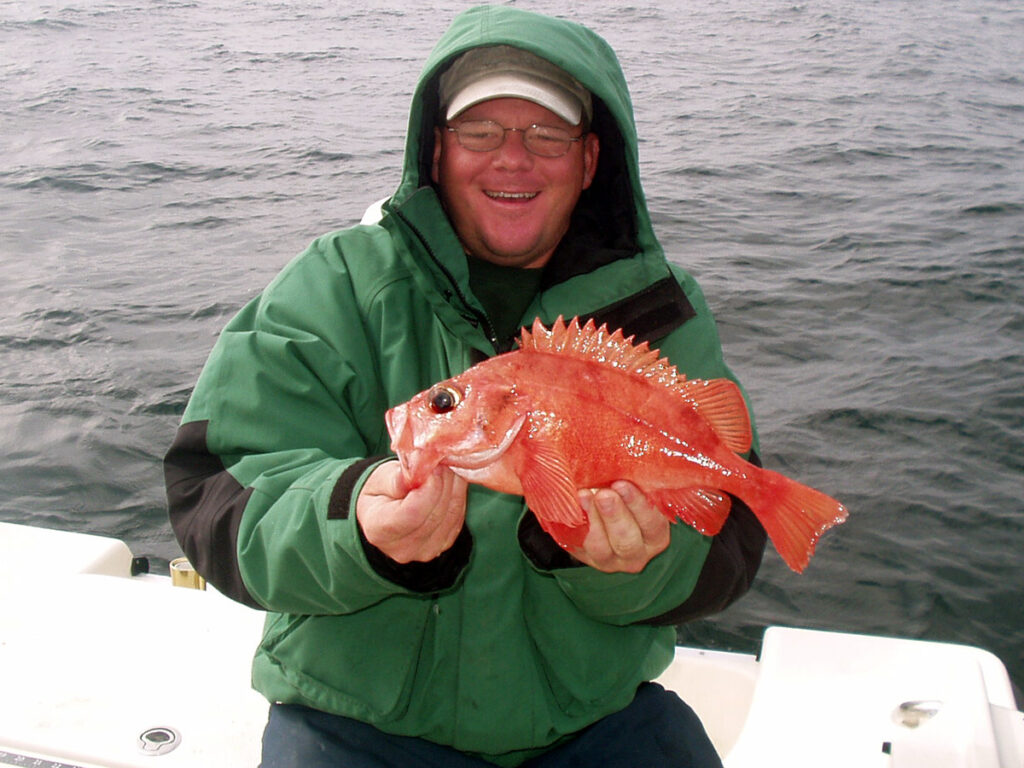
Do you have a photograph of a fish you can’t identify? If so, we’re up for the challenge, and would welcome the opportunity to share your photo and its ID with an international audience of enthusiasts. (Whether published or not, we will personally respond to every inquiry.) Email your jpgs, as large/hi-res as possible, to: fishfacts@sportfishingmag.com.
When an angler in the U.S. mentions fishing for redfish, one species comes to mind: red drum, widely called redfish through its range — a big drum caught primarily inshore, typically in very shallow waters, in Southeast and Mid-Atlantic states. But Capt. Terry Nugent, with Riptide Charters in Sandwich, Massachusetts, caught a very different kind of redfish in 400 feet of water off Chatham, Massachusetts.
“I’ve landed a few of these over the years,” he says of the fish in his photo. The fish are marketed as redfish, he adds, “but obviously they’re not red drum. What are they really?” He also asks how large they grow, what is a normal depth to encounter them, and what is their range.
Nugent did indeed catch a redfish. That is the correct common name for four species in the genus Sebastes. Two of those species are caught off Massachusetts, says Mike Fahay, a Northeast marine fish expert: S. fasciatus, the Acadian redfish, and S. mentalla, the deepwater redfish.
These species are part of the rockfishes complex (genus Sebastes) important in Pacific Northwest recreational and commercial fisheries. They are in no way related or similar to drums and croakers, like the red drum.
Fahay says that, based on depth of capture, this would likely be the Acadian redfish, common from 400 to 900 feet. In fact, the species — found from Iceland as far as south as the Mid-Atlantic — at one time supported an important, major commercial fishery and was a common item in fish markets in the Northeast. But it’s a story too-often told: Landings plummeted from 60,000 metric tons in 1942 to just over 300 metric tons landed in 1996. The species is now considered endangered by the IUCN, yet NOAA says it is not overfished.
Like all rockfish species, redfish are slow growing and long lived, increasing their susceptibility to overfishing. These days, most that are caught weigh in at under two pounds, Fahay reports. (The IGFA all-tackle record, caught in 2010, weighed a whopping 2 ½ pounds.) At one time, redfish weighing up to 24 pounds were caught.








